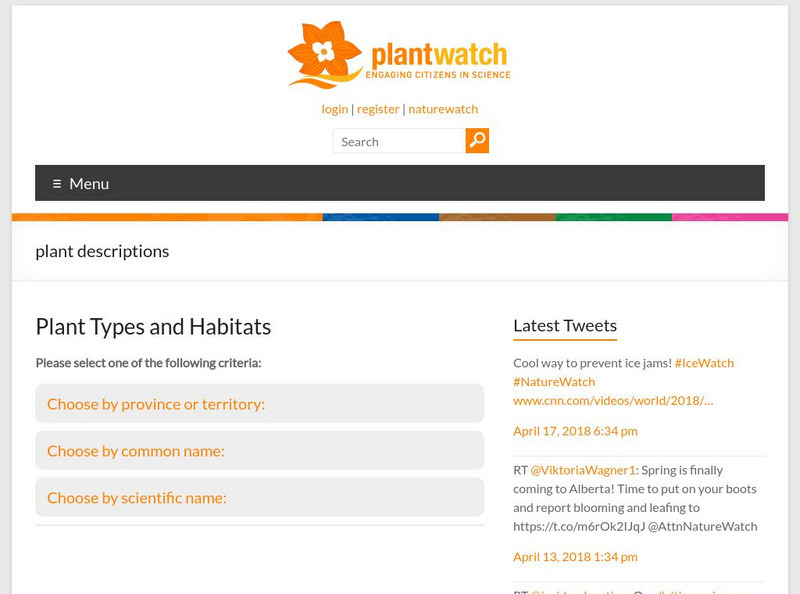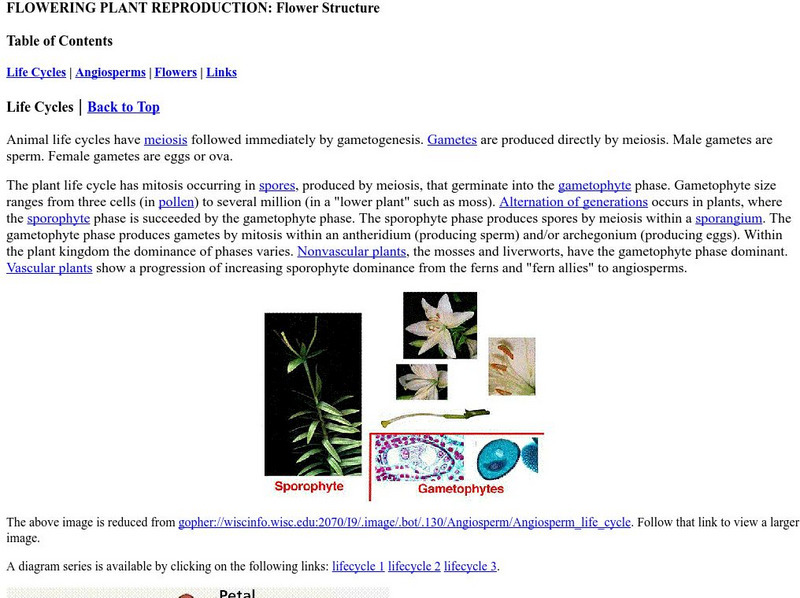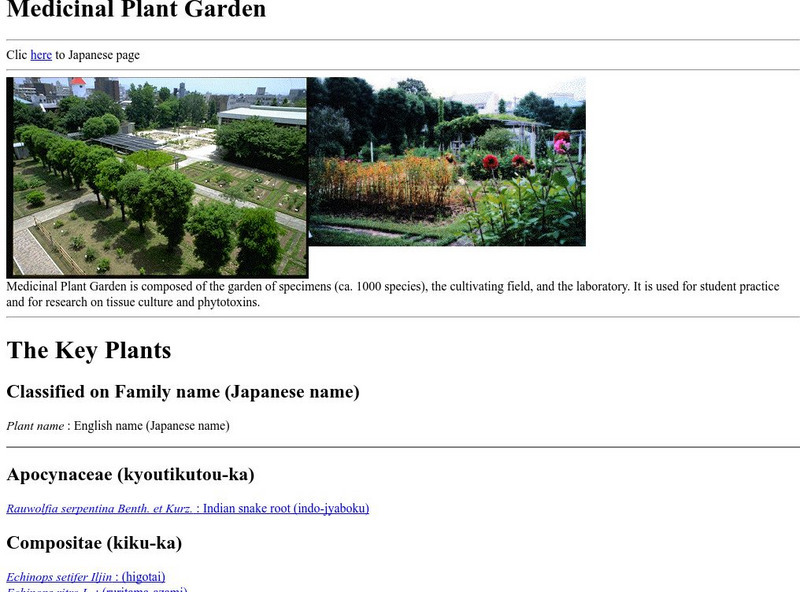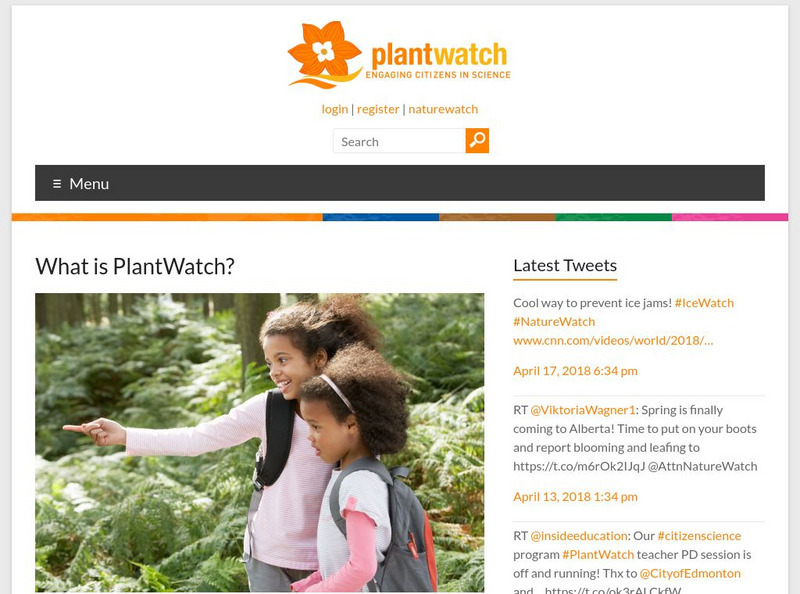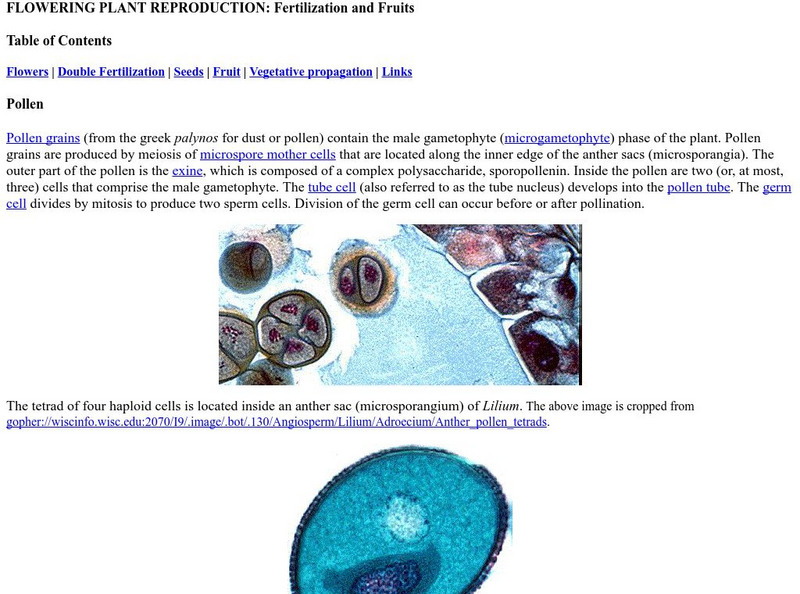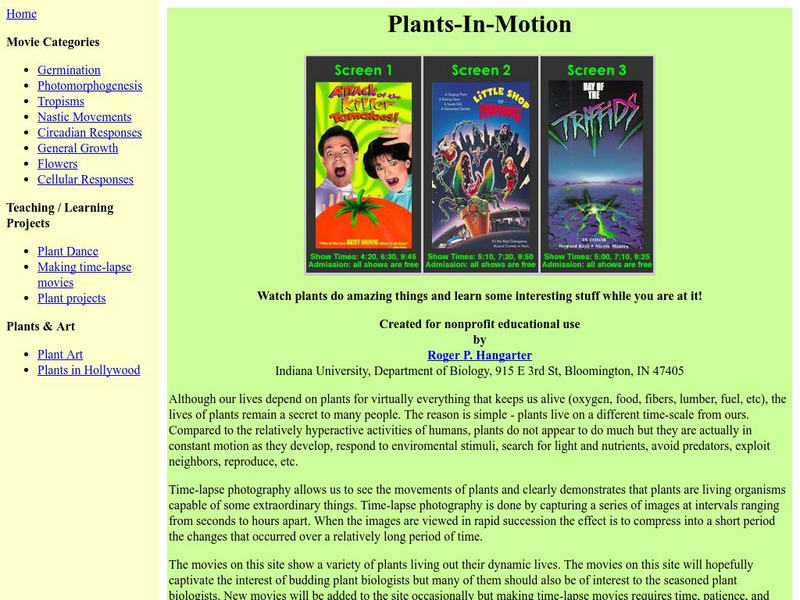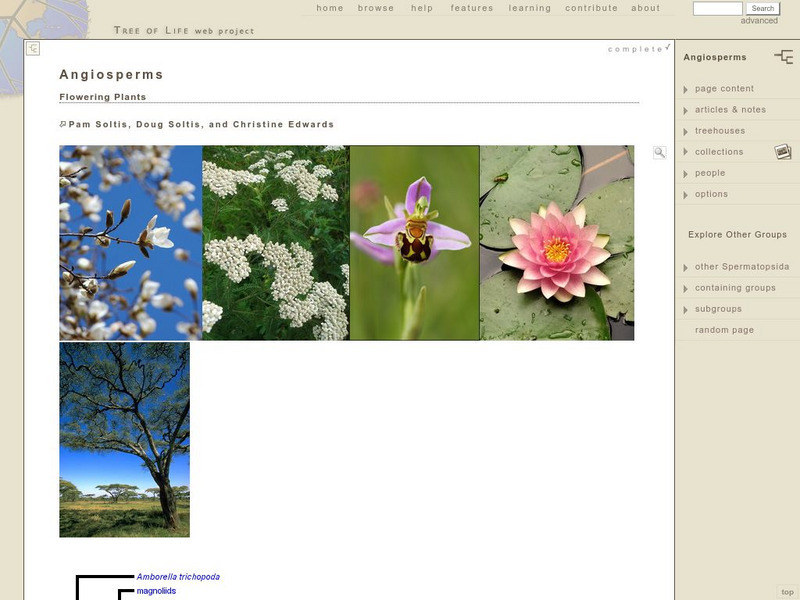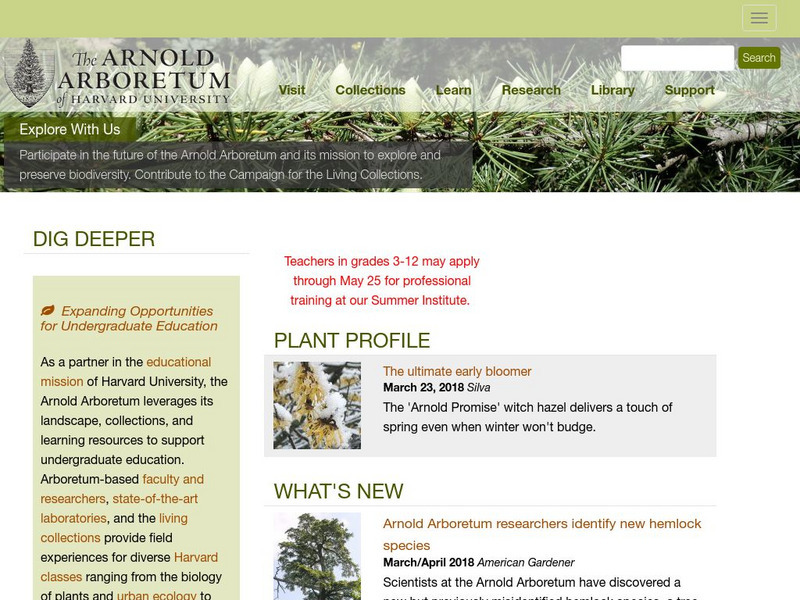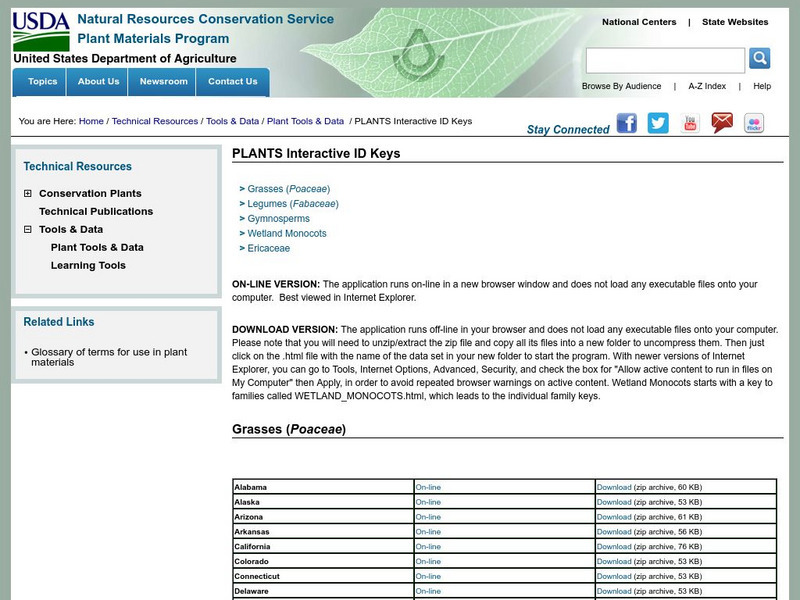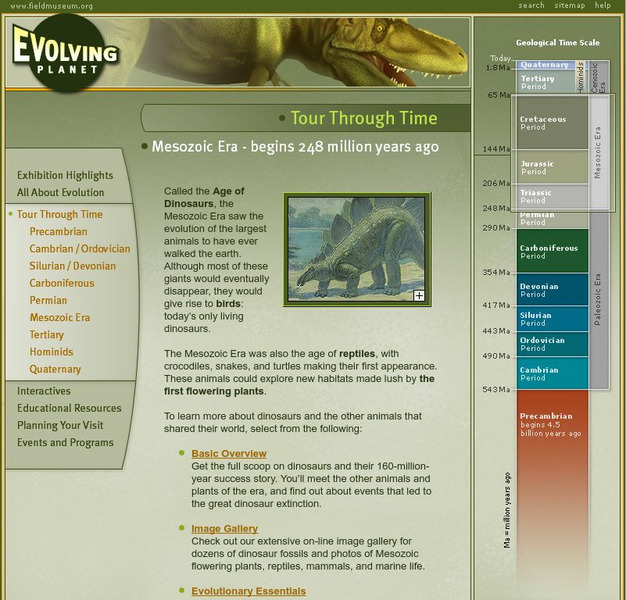Hi, what do you want to do?
American Museum of Natural History
What's This? Reproduction
Attracting the right mate is as important for humans as any other species. An interesting lesson teaches individuals about several strategies that animals and plants have adapted to attract their mates. From colorful nests to powerful...
Biology in Motion
Organize-It
Many pupils struggle to categorize and organize related content. Multiple quizzes on a variety of topics offer practice for these specific skills. Scholars move items around until they think each is placed in the proper position....
American Museum of Natural History
What's This? Feeding
Some species have pretty creative methods for catching food. Young scientists learn about some interesting ways organisms get the nutrients they need by navigating an online interactive lesson that would be suitable for a remote learning...
Other
Plant Watch: Plant Descriptions
The page, "Plant Descriptions," will lead you to detailed information on various plants that are native to a particular province. Just select the province you are most interested in, and a list of species native to that province will...
San Diego Zoo Global
San Diego Zoo: Flowers
Certain plants are known for their eye-catching blooms. Think of roses, orchids, carnations, and tulips. We often refer to these plants as "flowers." A flower, though, is just one part and quite an important part of a plant. Not all...
Estrella Mountain Community College
Estrella Mountain Community College: Flower Structure
Site covers all aspects of plant reproduction such as life cycles, angiosperms and flowers. Provides links to other sites to aide in research.
Other
Kumamoto University: Medicinal Plant Garden
This site provides information on the Medicinal Plant Garden located in Japan. The web page presents a list of all the plants the garden contains, and their pictures.
Other
The Charms of Duckweed (Smallest Flowering Plant)
Have a fun learning experience as you read about the smallest flowering plant. Botanical facts, pictures, projects, and practical uses of the Duckweed plant are all part of this site.
Other
Nature Canada: Connect With Nature: Plant Watch
PlantWatch is a Canadian program that uses volunteers to record data about a variety of plant species in each province and territory, and then submit their observations. Monitoring plants provides valuable information about the health of...
Estrella Mountain Community College
Flowering Plant Reproduction: Fertilization and Fruits
Provides information and illustrations of the reproduction process in flowers. Learn more about flowers, double fertilization, seeds, fruit and vegetative propagation.
Indiana University
Indiana University: Plants in Motion
Plants grow and change on a time scale that is too slow for us to observe in real time. Time-lapse photography is a simple technique that allows us to see the movements of plants and clearly demonstrates that plants are living and...
Other
Denver Botanic Gardens
This site presents information on the Denver Botanic Gardens in Colorado. There are five different gardens within the larger structure, they are: the plant collections, the chatfield arboretum, the japanese garden, the tropical botanica,...
Ducksters
Ducksters: Biology for Kids: Non Flowering Plants
On this site, learn about the biology of non-flowering plants including gymnosperms, conifers, cones, seed, spores, ferns, and mosses.
Canadian Museum of Nature
Canadian Museum of Nature: Native Plant Gardening
Plants native to Canada that would do well in small, ecologically friendly gardens are presented here. There are several plants each for ponds, meadows and woodlands. Each plant has a popup window with facts about it.
Other
Botanical Garden at Gottingen
This site provides information on the Botanical Garden at Gottingen University located in Germany. If you click on the sub-heading "Subjects and History",an English text will come up presenting further details on the garden.
Tree of Life Project
Tre of Life Web Project: Angiosperms
Identify and understand what angiosperms are and their relationship in the evolutionary tree of flowering plants.
Smithsonian Institution
National Museum of Natural History: Department of Botany
Visit the Smithsonian's Department of Botany, and search online from the specimen collection of nearly 800,000 plant specimen records. In addition, learn about research being conducted, activities and events hosted by the department,...
Idaho State University
Idaho Museum of Natural History: Guide to the Plants of Idaho State Arboretum
This resource describes the different plants of the Idaho State Arboretum in Pocatello. Users are provided with a picture and a description of every plant in the arboretum. You can click on the pictures for a larger view.
Other
Parts of Plants
Each part of a plant has a very important function. All plants produce flowers for the same reason: to make seeds so another plant can grow.
Estrella Mountain Community College
Estrella Mountain Community College: Plants and Their Structure Ii
Explore information about the structure of the plant with this page. Investigate the difference between monocots and dicots by comparing both descriptions and pictures. Also understand what produces secondary growth. Finally, look at the...
Other
Flora of Europe: A Photographic Herbarium
This site from Flora of Europe gives a general description and photos for every type of vegetation found in Europe. It is very complete, but hard to navigate if you don't know the scientific name for the plant you're interested in.
Harvard University
The Arnold Arboretum of Harvard University
This site contains general information about The Arnold Arboretum of Harvard University in Boston, Massachusetts. The site also gives a selection of links that tell more about the garden.
US Department of Agriculture
Us Department of Agriculture: Plants Interactive Id Keys
A database of information about plants across the United States and how to identify them. Covers grasses, legumes, gymnosperms, wetland monocots, and the Ericaceae flowering plants. The information is contained in downloadable zip files,...
The Field Museum
Field Museum: Exhibits: Evolving Planet: Mesozoic Era
In this effective exhibit, you will meet the dinosaurs and other plant and animals of Mesozoic Era. Observe photos of flowering plants, reptiles, mammals and marine life. Listen to interesting video interviews with scientists who study...








